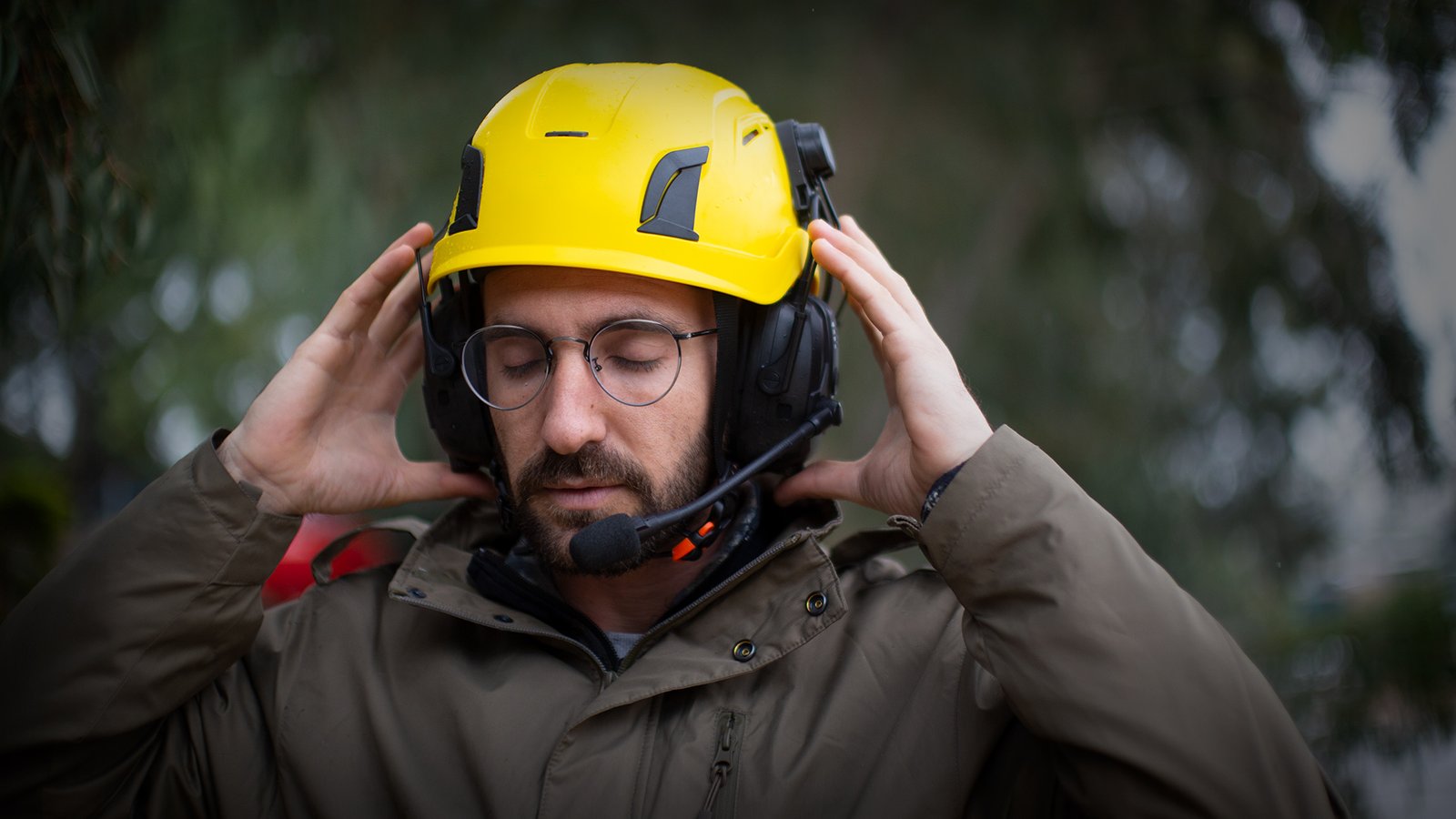Advanced Wearable Comm Systems Increase Arborist Productivity, Save Lives
Tree workers welcome smart, real-time communication built into hearing protection headsets. We all know the importance of communication, but for teams involved in forestry and tree care, it can be a matter of life or death. Those in the industry know how dangerous this work can be—despite advances in tools and safety rules, there are still far too many tree-related injuries every year, many of which are fatal. In some cases, equipment advances do not equal a safer work environment.
Some experts believe aerial lifts lead to a false sense of security and that the use of power tools near utility lines have added to the danger of tree work. The opposite is true for communication, where technology advances are welcomed by crews seeking to increase safety. “Yesterday, I watched helplessly from the top of a white oak as my groundman stopped up the chipper chute and kept feeding it.
Had to come down and help unclog it, which put us behind enough that we were caught by a thunderstorm, resulting in an unfinished job and no paycheck till next week,” said one arborist.
Two-way radios are certainly an improvement over yelling from the ground or using hand signals that may be misinterpreted or not seen by all team members. However, having to pull out a radio (or even just needing to push a button and waiting for your turn to speak) is far from ideal, it is not immediate communication and not worth chancing a fatality.

Said another arborist: “If my ground guy is pulling limbs to the chipper, and I see that my rope is along for the ride, I need to communicate that in real time. [The same is true] if I’m topping a tree and cut my rigging line. The ground guys (again in real time) can tell me what I did. It’s great to have good controls and discipline, but I have to be proactive and operate under Murphy’s law. Because the guys on the ground are family, and at the end of the day, I need to get everyone home.”
Just as radios were a tremendous improvement over yelling instructions up to climbers, new technologies take communication to a safer, more productive level. Advanced wearable intercom systems are ideal for tree-care and small forestry teams, providing hearing protection; hands-free communication (including voice commands to the system); the ability to effortlessly split into smaller groups and then rejoin; and a full-day, continuous-use battery.
Smart communication devices can be integrated with headbands or with hard hat mounts to enable highly fluid team communication. Additionally, teams prefer dynamic mesh communications that work with an unlicensed band versus the traditional 2-way radio com systems that are generally subscription-based.
Enhancing Worker Safety
Mesh communication systems use a wireless mesh network that typically comprises radio nodes organized in a mesh topology, creating rich interconnections among communication devices. This technology evolution provides flawless communication for work teams in settings where real-time communication is critical.
The communications network can now be completely autonomous (no base stations are necessary) and always on, so users don’t need to press a button to speak. When utilizing dynamic mesh communications, a self-healing network can be created, connecting up to 15 users within a two-mile range. Multiple teams can be accommodated within a target territory by assigning each to one of many available channels.
Users are alerted when their connection to the network is out of range and are automatically added back into the group when they come back into range. Worker safety is greatly enhanced with these technological advances in wearable communication systems because they provide situational awareness while protecting against loud noise levels.
The compatibility of this new networking topology with noise protection hardware provides arborist teams with a one-two punch for safety, productivity, and profitability. When ear protection is switched on, it reduces ambient noise to 82 decibels but lets through important sounds like warning signals. That means tree-care workers can get relief from chainsaw and wood-chipper noise without worrying they’ll miss hearing, say, the beeping of a nearby truck backing up.
Because the intelligent system can be accessed through voice commands such as “volume up,” “battery status,” “mute mic,” or “mute audio,” there’s never a need for users to put down a tool or let go of machine controls to change a setting. The system’s dynamic mesh is a self-optimizing and self-healing network that is always seeking the best connection and when a device disconnects, it automatically reconnects, ensuring the group’s communication remains cohesive and connected.
Although such systems are designed for team communication, they have a one-on-one communication option accessed via mobile devices. Either through voice activation or the click of a contact name, a team lead can be connected to a single worker to have a completely private conversation. FM radio and Bluetooth are also built into these evolved systems, letting workers listen to the radio, receive phone calls, or stream music without removing their head gear.
Highly customizable, these options can be disabled by those in charge whenever necessary. Such systems are highly resistant to water and dust (IP-54), and include emergency notification capabilities as well. In addition to voice activation, there is the ability to hear the volume at which the user is speaking using a self-hearing/side tone.
A New Best Practice
Arborists often find themselves in a Catch-22 situation: the protection they wear to protect against hearing damage from noisy equipment can make communication difficult. Since a lack of communication is a significant contributing factor to a large number of occupational accidents, this situation needs to be rectified. It’s time for the forestry and tree-care industries to take advantage of new technologies to eliminate less-than-perfect communication whether it’s shouting, hand signals, or standard cellular calls The ability to easily communicate completely, hands-free in real time while remaining protected from hearing loss must become a best practice for tree-care and forestry workers in the US and around the world.
